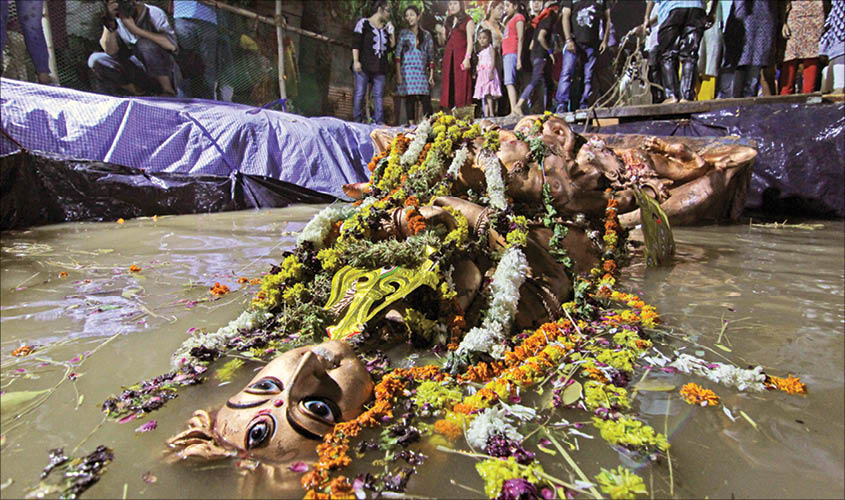Delhi is gearing up for the grand Bengali festival of the year, Durga Puja. Every year, thousands of pandals are set up in the national capital to celebrate the five-day festival. And Chittaranjan Park (C.R. Park) remains the hub of Durga Puja celebrations in Delhi. The place is known for its creative interpretations of the puja pandal. This year, too, some of the pandals have been designed in an expectedly unique way. The highlight being the eco-friendly pandals and idols put up here.
Over the years, we have seen the Durga idols stranded on the banks of the Yamuna due to insufficient water in the river. To avoid the destruction of nature after the festivities, the B-Block Durga Puja Samity and the C.R. Park Pocket-52 Durga Puja Committee have been doing bhumi bisarjan (immersing the idol of Durga in a water tank at the puja grounds) for a long time, instead of taking the idol to the river.
P.K. Paul, General Secretary of the C.R. Park Pocket-52 Durga Puja Committee, told Guardian 20, “The decision of not immersing the idol in the river was quite challenging. Convincing people was also a tedious task but we did it. This is our sixth year of doing bhumi bisarjan like this.”
Since the Yamuna is highly polluted already, the decision of immersing the idols in a water tank is a step towards saving the environment. “Bhumi bisarjan is safe for nature as well as for the people,” added Paul.
Initially, there were concerns regarding the religious implications of this practice. “We first talked to the pundits about doing bhumi bisarjan and they said that it is mandatory to immerse the Navadurga (made with a banana tree) in the river. But there is no harm in immersing the idol in [a water pit on] the ground,” he said.

The president of Pocket-52, Ashok Basu, talked to us about using eco-friendly colours for the Durga idol. He said, “Before the availability of bio-degradable colours in the market, we used to extract colours from vegetables and seeds of tamarind to paint the faces of the idols. But since the past seven years, we have been using bio-degradable colours. It is very cost-effective.”
Sayan Acharya, executive member of the B-Block Durga Puja Samity, expressed the Samity’s main concern about the environment. “Every year, the Yamuna gets polluted like anything after puja celebrations in the city. It is very difficult to convince people about change when it comes to religious matters. People who go for the bisarjan procession understand the plight of watching an idol getting dumped in the river, as there is no water to immerse the idol in. So, we decided to dig up two holes in our own puja ground according to the size of the idol,” he said.
“Besides, the ladies, aged people and children are not able to attend the processions. Now, people stay back in the puja ground to bid goddess Durga goodbye and enjoy every bit of it,” shared Acharya.
C.R. Park’s B-Block has been using bio-degradable colours for years now and this year they have also banned the use of polystyrene (thermocol) for decoration purposes. This year, the idol will be made entirely of mud, including the hair and ornaments of the goddess. “We leave the idol for four-five days to get dissolved in water, then we spread the water on the ground, and return the structure to the idol-makers for reuse. Instead of thermocol, we are using shola [a bio-degradable material] for pandal decorations. We will also avoid plastic plates and other plastic items,” informed Acharya.
About this initiative, Acharya concluded, “It’s a year-long process of organising eco-friendly Durga Puja and B-Block is getting there with time. Bringing about change takes time and courage and Maa Durga is a symbol of courage and strength.”

